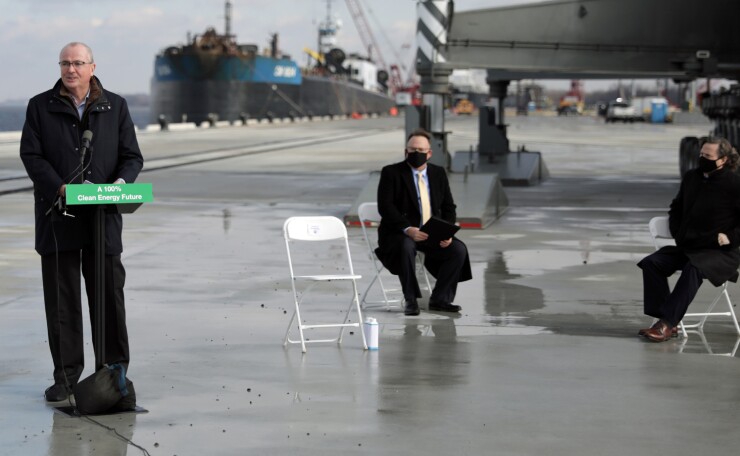Developer axes New Jersey’s flagship offshore wind energy project
2 min read

Two major offshore wind projects in New Jersey got the ax as their developer, Danish energy company Ørsted, reassesses its U.S. portfolio citing sustained inflation and rising construction costs.
Mads Nipper, Group President and CEO of Ørsted, on Tuesday in July, clearing a major regulatory hurdle to construction of Ocean Wind 1.
Escaping the ax is another big Ørsted project in New England.
The company, also on Tuesday, said it made a final investment decision to proceed with the smaller Revolution Wind project, a planned 704 MW offshore wind farm in off Rhode Island and Connecticut in which Ørsted owns in a 50/50 partnership with investor-owned utility Eversource. Construction is expected to begin in 2024.
That project is buoyed by Connecticut state support for the redevelopment of the State Pier in New London as a staging point for the project.
The company’s Danish headquarters said Tuesday it would recognize impairments equivalent to $4.1 billion for its U.S. portfolio, of which $2.9 billion is related to Ocean Wind 1.

Edwin J. Torres/ NJ Governor’s Office
Murphy said in his statement that his administration and state legislators had insisted upon protections for the project that would ensure “New Jersey will receive $300 million to support the offshore wind sector should Ørsted’s New Jersey projects fail to proceed.”
Murphy, in his announcement, said he directed his office to “review all legal rights and remedies and to take all necessary steps to ensure that Ørsted fully and immediately honors its obligations.”
Adie Tomer, senior research associate and associate fellow at Brookings, said major construction-related cost increases and inflation “are real right now” and forcing some developers to take stock of new and ongoing projects as “construction-related cost inflation is significantly higher than consumer-driven measures.”
Those concerns are evident in offshore public-private-partnership development, like those used to develop Ocean Wind 1 and 2, where it’s the private sector that “really has skin in the game.”
“All of those contracts are always under review,” Tomer said.
“Companies doing this construction are ideally doing it soup to nuts — design, build, and then operate on some level. They need each project to pencil out,” he said.
“This one really reverberated,” Tomer said. “It becomes another ringing sound for both the folks on the Hill and the regulators, to say nothing of their peers at the state level. So, if we do not get these upward pressures on cost, including if not leading with permanent, right, we are not going to deliver the speed of kind of clean economy transition that we want.”







